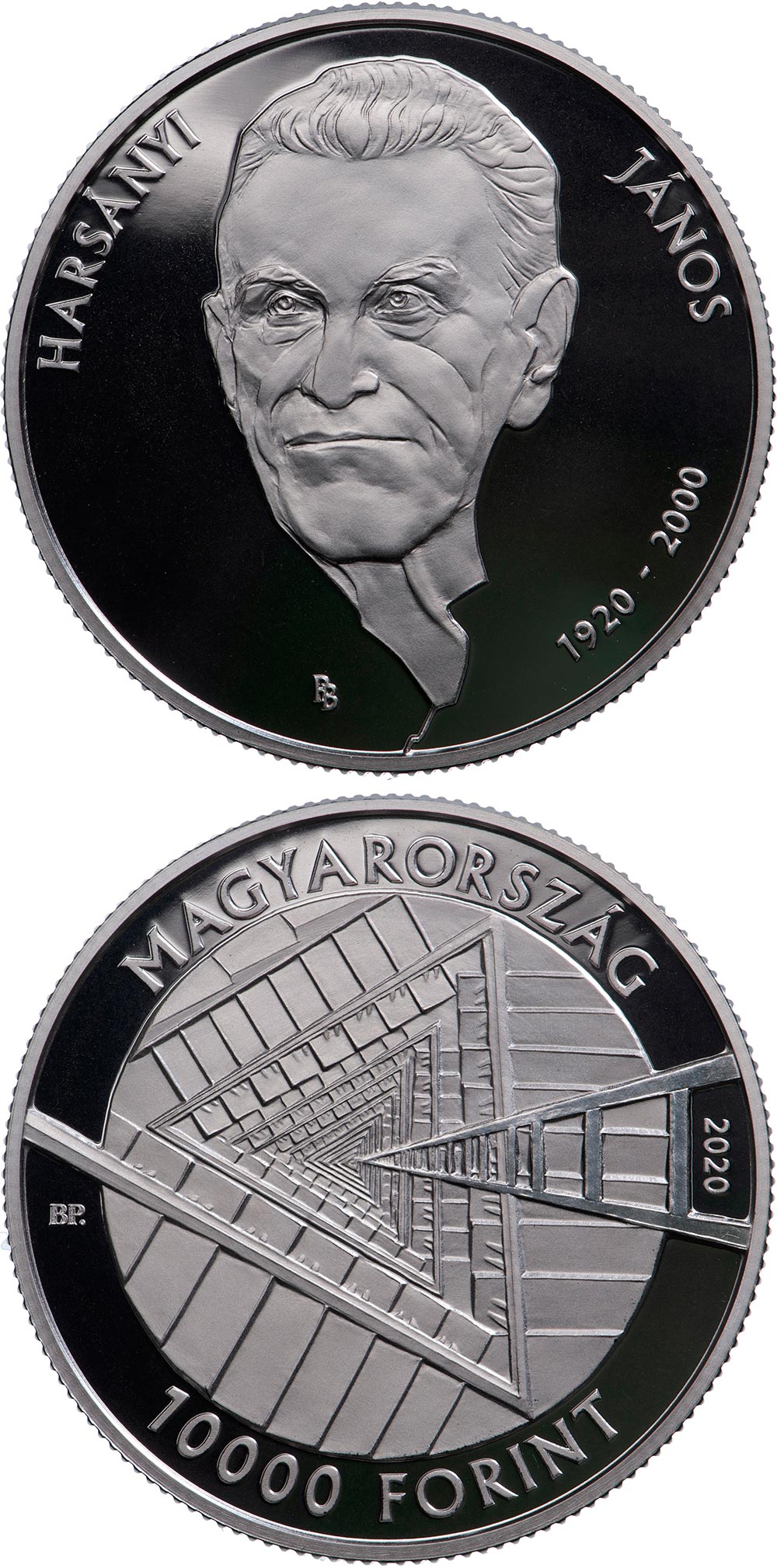10,000 forint - 100th Anniversary of the Birth of János Harsányi
Series: Hungary - Commemorative 10000 forint coins

The Magyar Nemzeti Bank will issue a silver collector coin with a face value of 10,000 forints and its non-ferrous metal version of 2,000 forints, on the 100th anniversary of János Harsányi’s birth, the Nobel Memorial Prize in Economics awarded scientist, on 29 May 2020. By issuing this collector coin, the MNB wishes to pay tribute to the renowned researcher of the game theory, who was a co-recipient of the 1994 Nobel Memorial Prize in Economic Sciences along with two other scientists, John Forbes Nash and Reinhald Selten ʻFor his ground-breaking work in the area of non-cooperative game theory and equilibrium analysisʼ. The collector coins were designed by sculptor Balázs Pelcz.
János Harsányi, a Hungarian Nobel Memorial Prize laureate in Economic Sciences, was born in Budapest on 29 May 1920. His primary field of research was game theory, he was awarded the Nobel Memorial Prize in Economic Sciences for the results he achieved in incomplete information games in 1994 as a co-recipient with John Forbes Nash and Reinhard Selten ʻFor his ground-breaking work in the area of non-cooperative game theory and equilibrium analysisʼ. In the field of game theory, they were the first scientists to receive the Nobel Memorial Prize in Economic Sciences. János Harsányi’s game theory results have had impacts on the entire field of economics and people’s everyday lives until today. Its effects on arms control and disarmament and spectrum auctions are still present.
The MNB will issue a silver collector coin of 10,000 forints and its non-ferrous metal version of 2,000 forints named ʻHarsányi Jánosʼ on the 100th anniversary of the distinguished researcher’s birth. The primary role of collector coins is to offer education and pay tribute, therefore they are not to be used in everyday payments. Their face value serves to preserve the value the coins represent to collectors.
The silver and the non-ferrous metal versions have the same design, with their denominations being the only difference. The collector coins were designed by sculptor Balázs Pelcz.
The central motif on the obverse of the coin is a triangular, endless set of stairs representing a hierarchical structure. A railing breaks the circular line surrounding the central motif on the left, and a ladder emerging from the centre of the stairs on the right. A symbolic representation of Harsányi’s idea, deserving a Nobel Memorial Prize, is shown on the obverse. According to this, he swapped an infinite regression (represented by the set of stairs) with a much simpler phrase (represented by the ladder). The compulsory elements of collector coins are also found on the obverse: on the edge, in the upper legend, the wording ʻMAGYARORSZÁGʼ (Hungary), is shown and at the bottom the denomination ʻ10,000ʼ and the lettering ʻFORINTʼ, to the left, below the representation of the railing, the mint mark ʻBP.ʼ, containing a security element, to the right, positioned vertically between the two upright pieces of the ladder the mint year ʻ2020ʼ is placed. Visible only when magnified at least 10,000, a microlettering, identical with the specific letter in the mint mark, is shown in the mint mark.